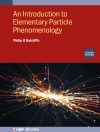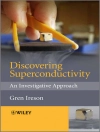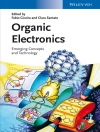A unique guide on how to model and make the best vacuum chambers
Vacuum in Particle Accelerators offers a comprehensive overview of ultra-high vacuum systems that are used in charge particle accelerators. The book?s contributors ? noted experts in the field ? also highlight the design and modeling of vacuum particle accelerators.
The book reviews vacuum requirements, identifies sources of gas in vacuum chambers and explores methods of removing them. In addition, Vacuum in Particle Accelerators offers an in-depth explanation of the control of the beam and the beam aperture. In the final part of the book, the focus is on the modelling approaches for vacuum chambers under various operating conditions. This important guide:
-Offers a review of vacuum systems in charge particle accelerators
-Contains contributions from an international panel of noted experts in the field
-Highlights the systems, modelling, and design of vacuum particle accelerators
-Includes information on vacuum requirements, beam-gas interactions, cryogenic temperatures, ion induced pressure instability, heavy ion machines
-Presents the most up-to-date information on the topic for scientists and engineers
Written for vacuum physicists, vacuum engineers, plasma physicists, materials scientists, and engineering scientists, Vacuum Particle Accelerators is an essential reference offering an in-depth exploration of vacuum systems and the modelling and design of charged particle accelerators.
Spis treści
Acknowledgements xv
Nomenclature xvii
Introduction 1
Oleg B. Malyshev
References 3
1 Vacuum Requirements 5
Oleg B. Malyshev
1.1 Definition of Vacuum 5
1.2 Vacuum Specification for Particle Accelerators 6
1.2.1 Why Particle Accelerators Need Vacuum? 6
1.2.2 Problems Associated with Beam–Gas Interaction 8
1.2.2.1 Beam Particle Loss 8
1.2.2.2 Background Noise in Detectors 8
1.2.2.3 Residual Gas Ionisation and Related Problems 9
1.2.2.4 Contamination of Sensitive Surfaces 9
1.2.2.5 Safety and Radiation Damage of Instruments 10
1.2.3 Vacuum Specifications 11
1.2.4 How Vacuum Chamber Affects the Beam Properties 12
1.3 First Considerations Before Starting Vacuum System Design 13
1.3.1 What is the Task? 13
1.3.2 Beam Lattice 14
1.3.3 Beam Aperture and Vacuum Chamber Cross Section 15
1.3.3.1 Required Mechanical Aperture 15
1.3.3.2 Magnet Design 17
1.3.3.3 Mechanical Engineering 17
1.3.3.4 Other Factors Limiting a Maximum Size of Beam Vacuum Chamber 17
1.3.4 Vacuum Chamber Cross Sections and Preliminary Mechanical Layout 18
1.3.5 Possible Pumping Layouts 19
1.4 First and Very Rough Estimations 20
1.5 First Run of an Accurate Vacuum Modelling 22
1.6 Towards the Final Design 22
1.7 Final Remarks 25
References 25
2 Synchrotron Radiation in Particle Accelerators 29
Olivier Marcouillé
2.1 Emission of a Charged Particle in a Magnetic Field 29
2.1.1 Radiated Energy Density and Power Density 31
2.1.2 Angular Flux 32
2.2 SR from Dipoles 32
2.2.1 Emission Duration and Critical Energy 33
2.2.2 Photon Flux 34
2.2.3 Vertical Angular Distribution of Photon Flux 37
2.2.4 Photon Power 39
2.2.5 Vertical Angular Distribution of Power 41
2.3 SR from Quadrupoles 42
2.4 SR from Insertion Devices 43
2.4.1 Motion of Charged Particles Inside a Planar Insertion Device 44
2.4.2 Resonance Wavelength 45
2.4.3 Radiation from Undulators and Wigglers 46
2.4.4 Angular Aperture of ID at Resonant Wavelength 51
2.4.5 Estimation of Power Distribution Radiated in a Wiggler 52
2.4.6 Estimation of the Power Collected by Simple Geometry Aperture 54
2.4.7 Method for Estimation Absorbed Power on the Complex Shapes 54
2.5 Software Dedicated to Evaluation of the Photon Flux and Power Distribution from the Insertion Devices 55
2.5.1 XOP 56
2.5.2 Synchrotron Radiation Workshop (SRW) 56
2.5.3 SPECTRA 57
2.5.4 SYNRAD 58
2.5.5 OSCARS 59
Acknowledgements 59
References 60
Further Reading 60
3 Interaction Between SR and Vacuum Chamber Walls 61
Vincent Baglin and Oleg B. Malyshev
3.1 Photon Reflectivity 61
3.2 Photoelectron Production 69
3.2.1 Total Photoelectron Yield 69
3.2.2 Effect of the Photon Energy 72
3.2.3 Effect of the Incidence Angle 76
References 76
4 Sources of Gas in an Accelerator Vacuum Chamber 79
Oleg B. Malyshev and Junichiro Kamiya
4.1 Residual Gases in Vacuum Chamber 79
4.2 Materials Used for and in Vacuum Chambers and Built-In Elements 81
4.2.1 Stainless Steel 82
4.2.2 Aluminium Alloys 83
4.2.3 Copper and Its Alloys 84
4.2.4 Titanium and Its Alloys 85
4.2.5 Ceramics 85
4.2.6 Other Vacuum Materials 86
4.3 Thermal Outgassing 87
4.3.1 Thermal Outgassing Mechanism During Pumping 88
4.3.2 Equilibrium Pressure 89
4.3.3 Vapour Pressure 91
4.3.4 Thermal Outgassing Rate of Materials 93
4.3.5 Outgassing Rate Measurements 97
4.3.5.1 Throughput Method 97
4.3.5.2 Conductance Modulation Method 98
4.3.5.3 Two-Path Method 98
4.3.5.4 Gas Accumulation Method 99
4.3.6 Thermal Desorption Spectroscopy 100
4.4 Surface Treatments to Reduce Outgassing 102
4.4.1 Cleaning 102
4.4.2 Bakeout 105
4.4.3 Air Bake 106
4.4.4 Vacuum Firing 106
4.4.5 Surface Coatings 108
4.4.5.1 Coating the Surface by Thin Films of Material with Low Hydrogen Permeability and Low Outgassing 108
4.4.5.2 Coating the Surface by Thin Film of Getter Materials 108
4.5 Electron-Stimulated Desorption 109
4.5.1 ESD Definition and ESD Facilities 109
4.5.2 ESD for Different Materials as a Function of Dose 112
4.5.3 ESD as a Function of Amount of Desorbed Gas 113
4.5.4 Effect of Pumping Duration 114
4.5.5 ESD as a Function of Electron Energy 119
4.5.6 Effect of Bakeout on ESD 122
4.5.7 Effectiveness of Surface Polishing and Vacuum Firing on ESD 123
4.5.8 A Role of Oxide Layer on Copper 125
4.5.9 Effect of Surface Treatment 125
4.5.10 Effect of Vacuum Chamber Temperature 125
4.6 Photon-Stimulated Desorption 128
4.6.1 PSD Definition and PSD Facilities 128
4.6.2 PSD as a Function of Dose 131
4.6.3 PSD for Different Materials 131
4.6.4 PSD as a Function of Amount of Desorbed Gas 135
4.6.5 PSD as a Function of Critical Energy of SR 136
4.6.6 Effect of Bakeout 137
4.6.7 Effect of Vacuum Chamber Temperature 140
4.6.8 Effect of Incident Angle 142
4.6.9 PSD versus ESD 144
4.6.10 How to Use the PSD Yield Data 145
4.6.10.1 Scaling the Photon Dose 145
4.6.10.2 Synchrotron Radiation from Dipole Magnets 145
4.6.10.3 PSD Yield and Flux as a Function of Distance from a Dipole Magnet 148
4.6.10.4 PSD from a Lump SR Absorber 151
4.6.10.5 Combining PSD from Distributed and Lump SR Absorbers 153
4.7 Ion-Stimulated Desorption 155
4.7.1 ISD Definition and ISD Facilities 155
4.7.2 ISD as a Function of Dose 156
4.7.3 ISD Yield as a Function of Ion Energy 158
4.7.4 ISD Yield as a Function of Ion Mass 159
4.7.5 ISD for Different Materials 160
4.7.6 Effect of Bakeout and Argon Discharge Cleaning 161
4.7.7 ISD versus ESD 161
4.7.8 ISD Yield as a Function of Temperature 161
4.7.9 ISD Yields for Condensed Gases 163
Acknowledgements 166
References 166
5 Non-evaporable Getter (NEG)-Coated Vacuum Chamber 175
Oleg B. Malyshev
5.1 Two Concepts of the Ideal Vacuum Chamber 175
5.2 What is NEG Coating? 177
5.3 Deposition Methods 179
5.4 NEG Film Characterisation 181
5.5 NEG Coating Activation Procedure 182
5.6 NEG Coating Pumping Properties 188
5.6.1 NEG Coating Pumping Optimisation at CERN 188
5.6.2 NEG Coating Pumping Optimisation at ASTe C 190
5.7 NEG Coating Lifetime 193
5.8 Ultimate Pressure in NEG-Coated Vacuum Chambers 195
5.9 NEG-Coated Vacuum Chamber Under SR 196
5.10 Reducing PSD/ESD from NEG Coating 200
5.10.1 Initial Considerations 200
5.10.2 ESD from Vacuum Chamber Coated with Columnar and Dense NEG Films 201
5.10.3 Dual Layer 202
5.10.4 Vacuum Firing Before NEG Deposition 204
5.11 ESD as a Function of Electron Energy 204
5.12 PEY and SEY from NEG Coating 204
5.13 NEG Coating Surface Resistance 206
5.14 NEG at Low Temperature 207
5.15 Main NEG Coating Benefits 207
5.16 Use of NEG-Coated Vacuum Chambers 208
References 209
6 Vacuum System Modelling 215
Oleg B. Malyshev
6.1 A Few Highlights from Vacuum Gas Dynamics 215
6.1.1 Gas in a Closed Volume 216
6.1.1.1 Gas Density and Pressure 216
6.1.1.2 Amount of Gas and Gas Flow 217
6.1.2 Total Pressure and Partial Pressure 218
6.1.3 Velocity of Gas Molecules 218
6.1.4 Gas Flow Rate Regimes 220
6.1.5 Pumping Characteristics 221
6.1.6 Vacuum System with a Pump 223
6.1.7 Vacuum Conductance 223
6.1.7.1 Orifice 224
6.1.7.2 Vacuum Conductance of Long Tubes 224
6.1.7.3 Vacuum Conductance of Short Tubes 225
6.1.7.4 Serial and Parallel Connections of Vacuum Tubes 226
6.1.8 Effective Pumping Speed 226
6.2 One-Dimensional Approach in Modelling Accelerator Vacuum Systems 228
6.2.1 A Gas Diffusion Model 229
6.2.2 A Section of Accelerator Vacuum Chamber in a Gas Diffusion Model 231
6.2.3 Boundary Conditions 232
6.2.4 Global and Local Coordinates for Each Element 238
6.2.5 Using the Results 240
6.2.6 A Few Practical Formulas 241
6.2.6.1 Gas Injection into a Tubular Vacuum Chamber 241
6.2.6.2 Vacuum Chamber with Known Pumping Speed at the Ends 241
6.2.6.3 Vacuum Chamber with Known Pressures at the Ends 244
6.3 Three-Dimensional Modelling: Test Particle Monte Carlo 245
6.3.1 Introduction 245
6.3.2 A Vacuum Chamber in the TPMC Model 246
6.3.3 TPMC Code Input 246
6.3.4 TPMC Code Output 248
6.3.4.1 Gas Flow Rate 248
6.3.4.2 Gas Density and Pressure 250
6.3.4.3 Transmission Probability and Vacuum Conductance 250
6.3.4.4 Pump-Effective Capture Coefficient 251
6.3.4.5 Effect of Temperature and Mass of Molecules 251
6.3.5 What Can Be Done with TPMC Results? 251
6.3.5.1 A Direct Model with a Defined Set of Parameters 252
6.3.5.2 Models with Variable Parameters 253
6.3.6 TPMC Result Accuracy 256
6.4 Combining One-Dimensional and Three-Dimensional Approaches in Optimising the UHV Pumping System 257
6.4.1 Comparison of Two Methods 257
6.4.2 Combining of Two Methods 258
6.5 Molecular Beaming Effect 260
6.6 Concluding Remarks 265
6.A Differential Pumping 265
6.B Modelling a Turbo-Molecular Pump 266
Acknowledgements 267
References 267
7 Vacuum Chamber at Cryogenic Temperatures 269
Oleg Malyshev, Vincent Baglin, and Erik Wallén
7.1 Pressure and Gas Density 269
7.2 Equilibrium Pressure: Isotherms 272
7.2.1 Isotherms 273
7.2.2 Cryotrapping 279
7.2.3 Physisorption on Gas Condensates 281
7.2.4 Temperature Dependence of the H2 Isotherms 282
7.2.5 Choice of Operating Temperature for Cryogenic Vacuum Systems 286
7.3 Gas Dynamics Model of Cryogenic Vacuum Chamber Irradiated by SR 289
7.3.1 Infinitely Long Vacuum Chamber Solution 291
7.3.1.1 Vacuum Chamber Without a Beam Screen 292
7.3.1.2 Vacuum Chamber with Holes in the Beam Screen 292
7.3.2 Short Vacuum Chamber Solution 294
7.3.2.1 Solution for a Short Vacuum Chamber with a Given Pressure at the Ends 296
7.3.2.2 Solution for a Short Vacuum Chamber with a Given Pumping Speed at the Ends 298
7.4 Experimental Data on PSD from Cryogenic Surface 300
7.4.1 Experimental Facility for Studying PSD at Cryogenic Temperatures 301
7.4.2 Discovery of Secondary PSD 301
7.4.3 Calculation of the Desorption Yields from Experimental Data 306
7.4.4 Primary PSD Yields 308
7.4.5 Secondary PSD Yields 310
7.4.6 Photon-Induced Molecular Cracking of Cryosorbed Gas 312
7.4.6.1 Experimental Measurements 312
7.4.6.2 How to Include Cracking into the Model 315
7.4.6.3 Example 316
7.4.7 Temperature of Desorbed Gas 318
7.5 In-Depth Studies with COLDEX 321
7.5.1 COLDEX Experimental Facility 321
7.5.2 PSD of Cu as a Function of Temperature 324
7.5.3 Secondary PSD Yields 325
7.5.4 PSD of a BS with Sawtooth for Lowering Photon Reflectivity and PEY 326
7.5.5 Vacuum Transient 328
7.5.6 Temperature Oscillations 329
7.6 Cryosorbers for the Beam Screen at 4.5 K 331
7.6.1 Carbon-Based Adsorbers 333
7.6.1.1 Activated Charcoal 333
7.6.1.2 Carbon Fibre 334
7.6.2 Amorphous Carbon Coating Absorption Properties 337
7.6.3 Metal-Based Absorbers 338
7.6.3.1 Aluminium-Based Absorbers 338
7.6.3.2 Copper-Based Absorbers 340
7.6.3.3 LASE for Providing Cryosorbing Surface 341
7.6.4 Using Cryosorbers in a Beam Chamber 341
7.7 Beam Screen with Distributed Cryosorber 342
7.8 Final Remarks 343
References 344
8 Beam-Induced Electron Multipacting, Electron Cloud, and Vacuum Design 349
Vincent Baglin and Oleg B. Malyshev
8.1 BIEM and E-Cloud 349
8.1.1 Introduction 349
8.1.2 E-Cloud Models 351
8.2 Mitigation Techniques and Their Impact on Vacuum Design 356
8.2.1 Passive Methods 357
8.2.2 Active Methods 363
8.2.3 What Techniques Suit the Best 365
8.3 Secondary Electron Emission (Laboratory Studies) 365
8.3.1 SEY Measurement Method 365
8.3.2 SEY as a Function of the Incident Electron Energy 367
8.3.3 Effect of Surface Treatments by Bakeout and Photon, Electron, and Ion Bombardment 367
8.3.4 Effect of Surface Material 368
8.3.5 Effect of Surface Roughness 369
8.3.6 ‘True’ Secondary Electrons, Re-Diffused Electrons, and Reflected Electrons 371
8.3.7 Effect of Incidence Angle 374
8.3.8 Insulating Materials 374
8.4 How the BIEM and E-Cloud Affect Vacuum 376
8.4.1 Estimation of Electron Energy and Incident Electron Flux 376
8.4.2 Estimation of Initial ESD 378
8.5 BIEM and E-Cloud Observation in Machines 379
8.5.1 Measurements in Machines 379
8.5.1.1 Vacuum Pressure 381
8.5.1.2 Vacuum Chamber Wall Properties 382
8.5.1.3 Specific Tools for BIEM and Electron Cloud Observation 386
8.5.2 Machines Operating at Cryogenic Temperature 390
8.5.2.1 Surface Properties at Cryogenic Temperature 391
8.5.2.2 Observations with Beams 394
8.5.2.3 The CERN Large Hadron Collider Cryogenic Vacuum System 401
8.6 Contribution of BIEM to Vacuum Stability 405
8.7 Past, Present, and Future Machines 407
Acknowledgements 409
References 409
9 Ion-Induced Pressure Instability 421
Oleg B. Malyshev and Adriana Rossi
9.1 Introduction 421
9.2 Theoretical 422
9.2.1 Basic Equations 422
9.2.2 Solutions for an Infinitely Long Vacuum Chamber 425
9.2.2.1 Room Temperature Vacuum Chamber 425
9.2.2.2 Cryogenic Vacuum Chamber 426
9.2.2.3 Summary for an Infinitely Long Vacuum Chamber 427
9.2.3 Short Vacuum Chamber 428
9.2.3.1 Solution for a Short Vacuum Chamber with a Given Gas Density at the Ends 428
9.2.3.2 Solution for a Short Vacuum Chamber with a Given Pumping Speed at the Ends 431
9.2.3.3 Solution for a Short Vacuum Chamber Without a Beam Screen Between Two Chambers With a Beam Screen 434
9.2.3.4 Some Remarks to Solutions for Short Tubes 437
9.2.4 Multi-Gas System 437
9.2.5 Two-Gas System 438
9.2.5.1 Solutions for an Infinitely Long Vacuum Chamber 439
9.2.5.2 Solution for a Short Vacuum Chamber in the Equilibrium State 439
9.2.6 Some Comments to the Analytical Solutions 440
9.2.7 Effect of the Ion-Stimulated Desorption on the Gas Density 441
9.2.7.1 Infinitely Long Vacuum Chamber (One Gas) 441
9.2.7.2 Vacuum Chamber with a Given Pumping Speed at the Ends (One Gas) 441
9.2.7.3 Two-Gas System 443
9.2.8 Some Numeric Examples from the LHC Design 443
9.2.8.1 The Critical Current for an Infinitely Long Vacuum Chamber 444
9.2.8.2 Short Vacuum Chambers 445
9.2.8.3 Effect of the Ion-Stimulated Desorption on the Gas Density 445
9.3 VASCO as Multi-Gas Code for Studying the Ion-Induced Pressure Instability 447
9.3.1 Basic Equations and Assumptions 447
9.3.2 Multi-Gas Model in Matrix Form and Fragmentation in Several Vacuum Chamber Elements 448
9.3.2.1 Boundary Conditions 449
9.3.3 Transformation of the Second-Order Differential Linear Equation into a System of First-Order Equations 450
9.3.3.1 Boundary Conditions 451
9.3.4 Set of Equations to be Solved 451
9.3.5 ‘Single Gas Model’ Against ‘Multi-Gas Model’ 452
9.4 Energy of Ions Hitting Vacuum Chamber 455
9.4.1 Ion Energy in the Vacuum Chamber Without a Magnetic Field 455
9.4.1.1 Circular Beams 455
9.4.1.2 Flat Beams 458
9.4.2 Ion Energy in a Vacuum Chamber with a Magnetic Field 460
9.4.2.1 Vacuum Chamber in a Dipole Magnetic Field 461
9.4.2.2 Vacuum Chamber in a Quadrupole Magnetic Field 461
9.4.2.3 Vacuum Chamber in a Solenoid Magnetic Field 462
9.5 Errors in Estimating the Critical Currents Ic 464
9.5.1 Beam–Gas Ionisation 465
9.5.2 Ion Impact Energy 465
9.5.3 Ion-Stimulated Desorption Yields 465
9.5.4 Pumping 466
9.5.5 Total Error in Critical Current 466
9.6 Summary 467
References 467
10 Pressure Instabilities in Heavy Ion Accelerators 471
Markus Bender
10.1 Introduction 471
10.2 Pressure Instabilities 472
10.2.1 Model Calculations of the Dynamic Pressure and Beam Lifetime 476
10.2.1.1 Closed System (Vessel) 476
10.2.1.2 Vessel Including Collimation 478
10.2.1.3 Longitudinal Profile 478
10.2.2 Consequences 479
10.3 Investigations on Heavy Ion-Induced Desorption 480
10.3.1 Desorption Yield Measurements 481
10.3.2 Materials Analysis 483
10.3.3 Dedicated Set-ups to Measure Ion-Induced Desorption Yields 485
10.3.4 Results 489
10.3.4.1 Materials 490
10.3.4.2 Surface Coatings 493
10.3.4.3 Cleaning Methods 494
10.3.4.4 Energy Loss Scaling 495
10.3.4.5 Angle Dependence 496
10.3.4.6 Conditioning 497
10.3.4.7 Cryogenic Targets 498
10.3.5 Theoretic 499
10.3.5.1 Interaction of Ions with Matter 499
10.3.5.2 Inelastic Thermal Spike Model 501
10.4 Conclusion: Mitigation of Dynamic Vacuum Instabilities 505
Acknowledgement 507
References 507
Index 515
O autorze
Oleg B. Malyshev is a Lead Scientist for Vacuum Science and Technology in Accelerator Science and Technology Centre at STFC Daresbury Laboratory near Warrington, UK.












